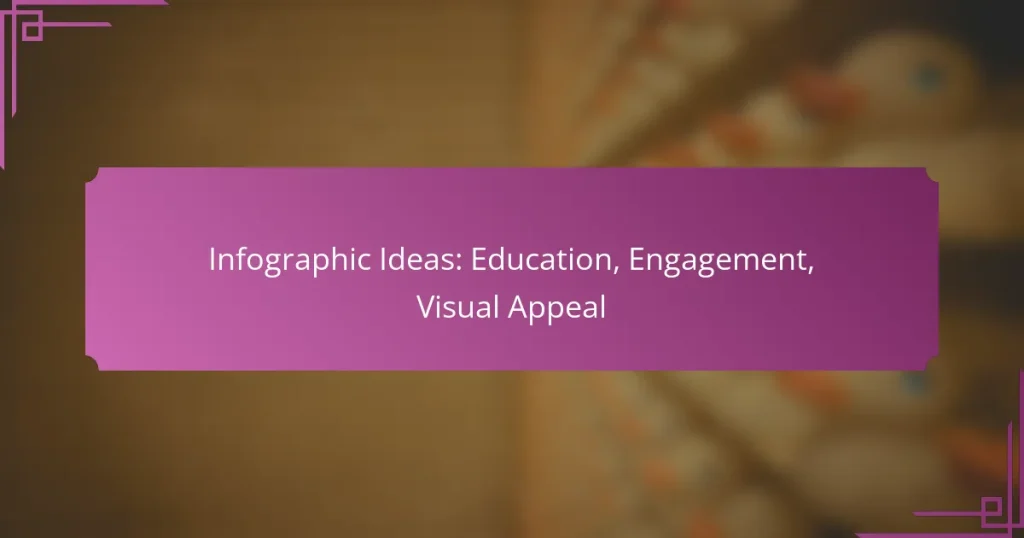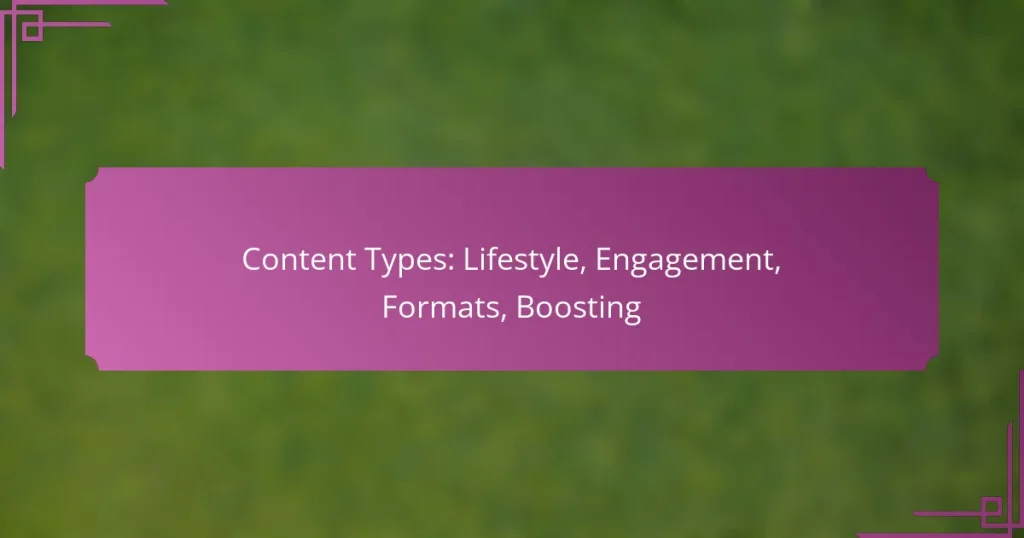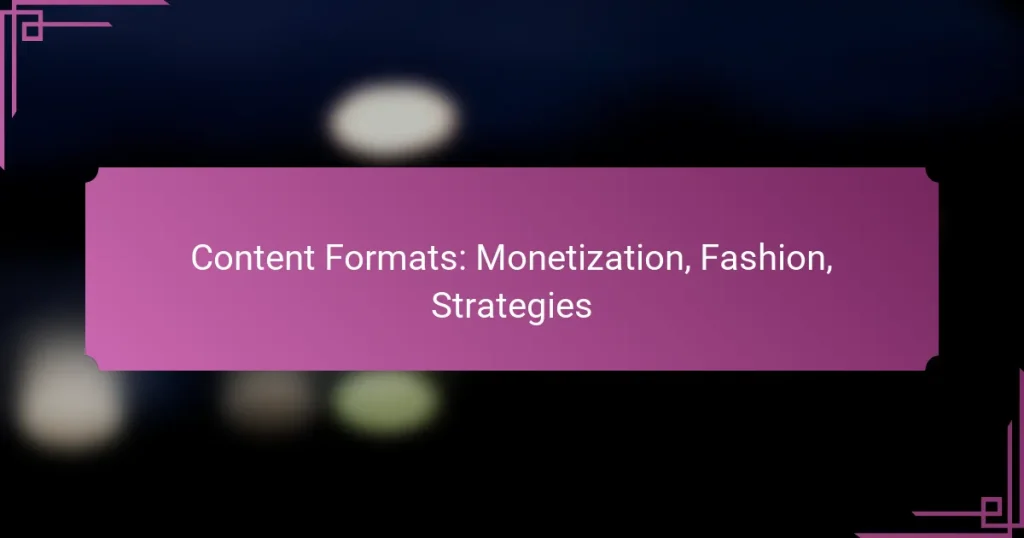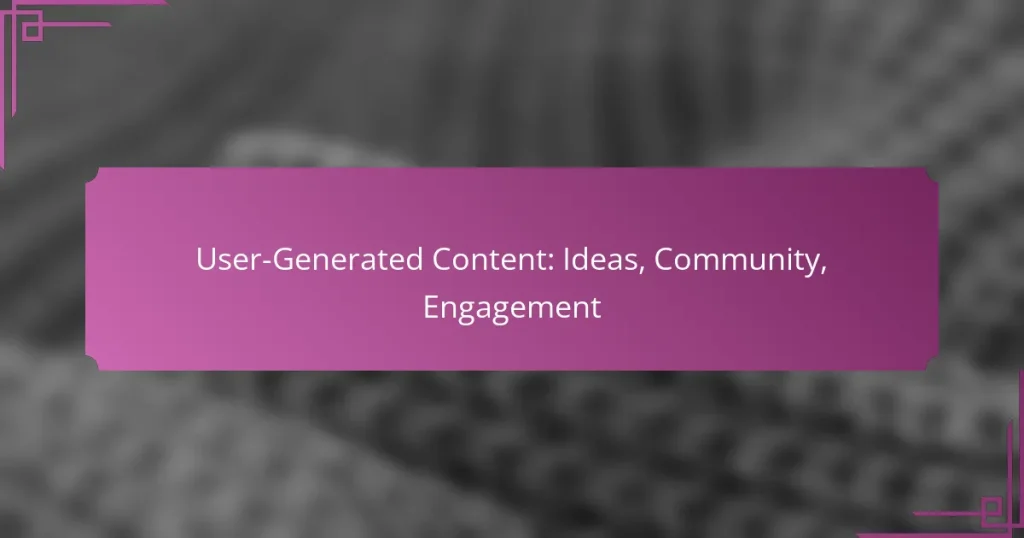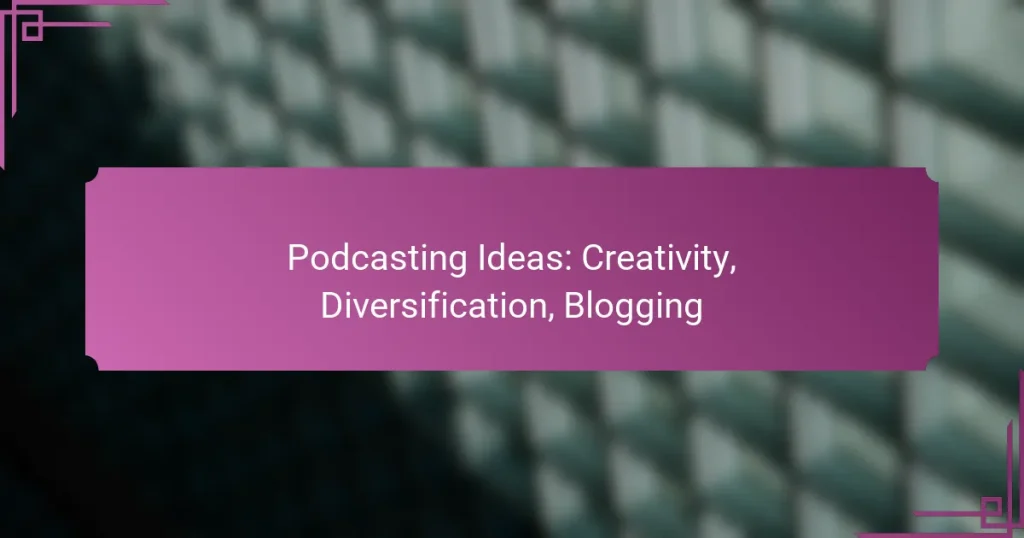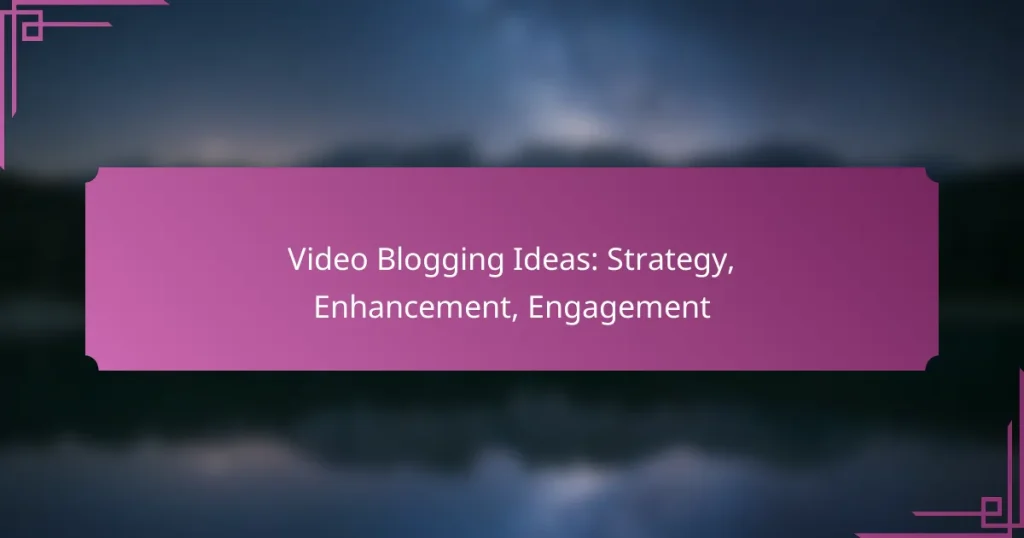Understanding the various content types for blogs is essential for engaging diverse audiences and driving traffic. From listicles and how-to guides to interviews and opinion pieces, each format offers unique advantages that can enhance reader interaction. By strategically incorporating these content types, bloggers can cater to different preferences and improve overall engagement.
Content Types: Lifestyle, Engagement, Formats, Boosting
Content Formats: Monetization, Fashion, Strategies
Written vs Visual Content: Choosing the Right Format
User-Generated Content: Ideas, Community, Engagement
Podcasting Ideas: Creativity, Diversification, Blogging
Video Blogging Ideas: Strategy, Enhancement, Engagement
What are the most effective content types for blogs?
The most effective content types for blogs include listicles, how-to guides, interviews, case studies, and opinion pieces. Each type serves a unique purpose and can engage different audiences, making them valuable tools for driving traffic and building a loyal readership.
Listicles
Listicles are articles formatted as lists, often featuring numbered or bullet points. They are popular because they provide information in a digestible and easily scannable format, making them ideal for readers looking for quick insights.
When creating a listicle, ensure each item is relevant and offers value. Aim for lists with at least five items, but not so many that they overwhelm the reader. For example, “10 Tips for Effective Time Management” can attract readers seeking practical advice.
How-to guides
How-to guides offer step-by-step instructions on completing a specific task or achieving a goal. They are highly effective for educating readers and establishing authority in a niche.
To create a successful how-to guide, break down the process into clear, manageable steps. Use headings and subheadings for each step, and include visuals if possible. For instance, a guide titled “How to Start a Vegetable Garden” could cover planning, planting, and maintenance.
Interviews
Interviews provide insights from experts or influential figures in a particular field. They can add credibility and a personal touch to your blog, making the content more relatable and engaging.
When conducting interviews, prepare thoughtful questions that elicit detailed responses. Consider including background information about the interviewee to provide context. For example, an interview with a local chef can highlight their unique approach to cuisine and attract food enthusiasts.
Case studies
Case studies analyze real-life examples to illustrate how a concept or strategy works in practice. They are particularly useful for demonstrating the effectiveness of products or services.
To write a compelling case study, outline the problem, the solution implemented, and the results achieved. Use data and testimonials to support your claims. For instance, a case study on a marketing campaign could detail the strategies used and the resulting increase in sales.
Opinion pieces
Opinion pieces allow writers to express their views on a topic, fostering discussion and engagement among readers. They can help establish a blog’s voice and perspective within a niche.
When writing an opinion piece, back your arguments with facts and examples to enhance credibility. Encourage reader interaction by posing questions or inviting comments. For example, an opinion piece on climate change could discuss personal responsibility and suggest actionable steps for readers to take.
How do different content types impact audience engagement?
Different content types significantly influence audience engagement by catering to varying preferences and consumption habits. Visuals, for instance, can capture attention quickly, while longer articles may encourage deeper reading and retention.
Visual content increases shares
Visual content, such as images, infographics, and videos, tends to generate higher shares on social media platforms. This is because visuals are more engaging and easier to digest compared to text-heavy posts.
To maximize shares, consider using high-quality images and relevant infographics that summarize key points. Aim for content that is visually appealing and aligns with your brand’s message to encourage audience interaction.
Long-form articles boost time on page
Long-form articles, typically exceeding 1,000 words, can significantly increase the time users spend on a page. This extended engagement often leads to better retention of information and a greater likelihood of conversion.
When creating long-form content, ensure it is well-structured with clear headings and subheadings to facilitate easy navigation. Including relevant data, case studies, and actionable insights can enhance the value of the content and keep readers engaged longer.
What are the best practices for creating blog content?
Creating effective blog content involves several best practices that enhance readability, engagement, and search engine visibility. Focus on clear titles, multimedia integration, and mobile optimization to attract and retain readers.
Use SEO-friendly titles
SEO-friendly titles are crucial for improving your blog’s visibility in search engine results. Incorporate relevant keywords that reflect the content of your post while keeping the title concise and engaging.
A good rule of thumb is to keep titles under 60 characters to ensure they display fully in search results. For example, instead of “Tips for Writing Better Blog Posts,” use “10 Tips for Writing Engaging Blog Posts.” This approach not only attracts clicks but also helps with ranking.
Incorporate multimedia elements
Using multimedia elements like images, videos, and infographics can significantly enhance the reader’s experience. These elements break up text and provide visual interest, making your content more engaging.
Consider using high-quality images that are relevant to your topic and optimize them for faster loading times. Tools like Canva can help create custom graphics, while platforms like YouTube can host videos that complement your written content.
Optimize for mobile users
With a significant portion of web traffic coming from mobile devices, optimizing your blog for mobile users is essential. Ensure your blog design is responsive, meaning it adjusts seamlessly to different screen sizes.
Test your blog on various devices to check loading speed and readability. Aim for a loading time of under three seconds and use larger fonts for easier reading on smaller screens. Avoid pop-ups that can frustrate mobile users, as they can lead to higher bounce rates.
How can I measure the success of different blog content types?
To measure the success of various blog content types, focus on engagement metrics and traffic sources. These indicators will help you understand how well your content resonates with your audience and where your visitors are coming from.
Track engagement metrics
Engagement metrics are critical for assessing how readers interact with your blog content. Key metrics include comments, shares, likes, and time spent on the page. High engagement often indicates that your content is valuable and relevant to your audience.
Consider using tools like Google Analytics or social media insights to track these metrics. For example, a blog post that generates a significant number of shares may suggest that it resonates well with readers, while a low average time on page could indicate a need for more engaging content.
Analyze traffic sources
Understanding where your blog traffic originates is essential for evaluating content effectiveness. Analyze traffic sources such as organic search, social media, referrals, and direct visits to identify which channels drive the most visitors to your blog.
For instance, if a substantial portion of your traffic comes from social media, it may be beneficial to focus on creating shareable content tailored for those platforms. Conversely, if organic search is a major source, optimizing your content for SEO can enhance visibility and attract more readers.
What are the emerging trends in blog content types?
Emerging trends in blog content types focus on enhancing user engagement and personalization. As audiences become more discerning, interactive and personalized content, along with video blogging, are gaining traction to meet their preferences.
Interactive content
Interactive content involves user participation, making the experience more engaging. Examples include quizzes, polls, and interactive infographics that allow readers to explore information actively. This type of content can significantly increase time spent on a page and boost sharing rates.
To implement interactive elements, consider using tools like Typeform for quizzes or Canva for creating interactive graphics. Ensure that the content is relevant to your audience’s interests to maximize engagement.
Personalized experiences
Personalized experiences tailor content to individual user preferences, enhancing relevance and connection. Techniques include using data analytics to recommend articles based on past behavior or segmenting email lists for targeted newsletters. This approach can lead to higher engagement and conversion rates.
To create personalized experiences, leverage tools like Google Analytics to understand your audience better. Aim to segment your content based on demographics or interests, ensuring that each user feels the content speaks directly to them.
Video blogging
Video blogging, or vlogging, combines traditional blogging with video content, appealing to visual learners and those seeking dynamic storytelling. This format can include tutorials, behind-the-scenes looks, or commentary on trending topics, making it versatile and engaging.
To start video blogging, invest in a decent camera and microphone for quality production. Keep videos concise, ideally under 10 minutes, to maintain viewer attention. Promote your vlogs across social media platforms to reach a broader audience and drive traffic back to your blog.
